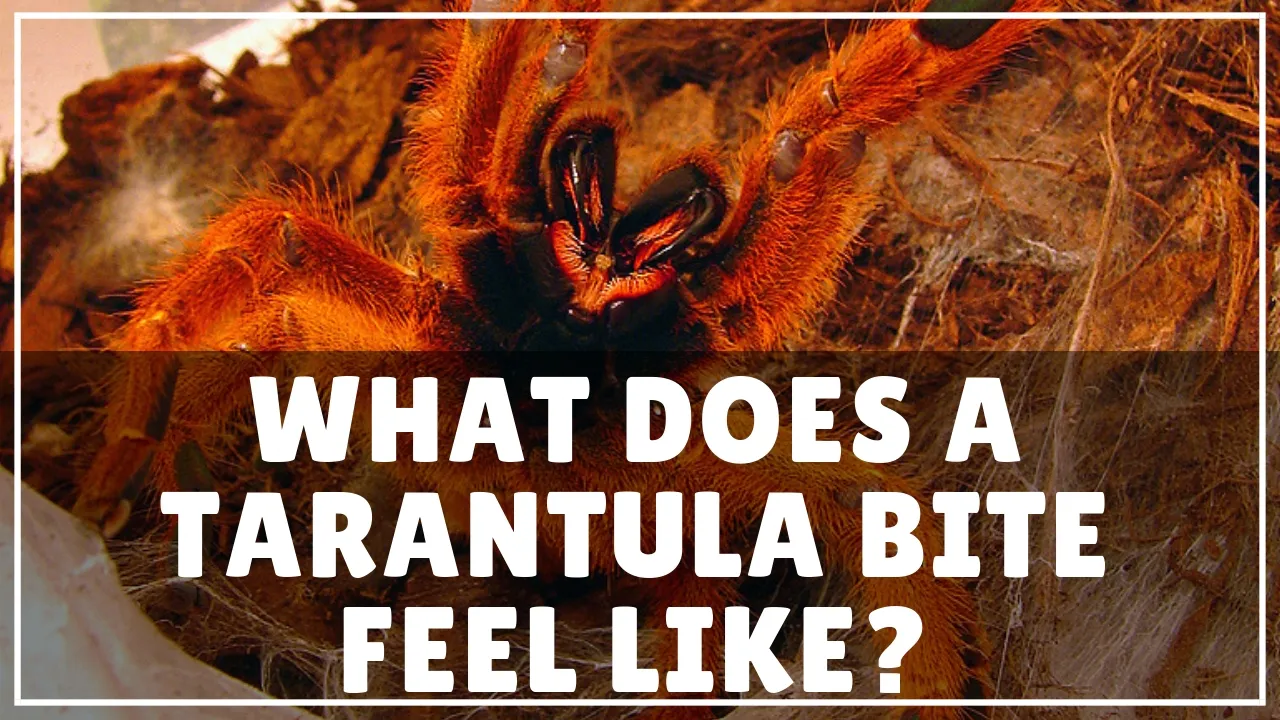The Reality of Tarantula Bites
Tarantulas, with their imposing size and often hairy appearance, can be intimidating. However, the reality of their bites is often misunderstood. While these large spiders possess fangs and venom, the effects of a tarantula bite are generally not as severe as many people believe. Understanding the true nature of tarantula bites, including their potential dangers, symptoms, and treatment, is crucial for anyone who encounters these fascinating creatures. This article aims to dispel myths and provide factual information about tarantula bites, offering a comprehensive guide to what you need to know.
Are Tarantula Bites Dangerous?
The danger associated with a tarantula bite varies depending on several factors, including the species of tarantula, the amount of venom injected, and the individual’s sensitivity. Generally, tarantula bites are not life-threatening to humans. Most bites cause localized pain, similar to a bee sting, and may result in some redness and swelling at the site of the bite. However, in rare cases, allergic reactions or secondary infections can occur, potentially leading to more serious complications. It is important to monitor the bite site for any unusual symptoms and seek medical attention if necessary.
Symptoms of a Tarantula Bite

Recognizing the symptoms of a tarantula bite is important for proper treatment. The symptoms can vary, but they generally fall into two categories, immediate and delayed. Immediate symptoms usually appear within minutes of the bite, while delayed symptoms may take hours or even days to manifest. Being aware of both types of symptoms can help you assess the severity of the bite and seek appropriate medical care.
Immediate Effects
The most common immediate effects of a tarantula bite include localized pain, which can range from a mild sting to a more intense throbbing sensation. Redness and swelling around the bite site are also typical. Some individuals may experience itching or a burning sensation. In rare cases, there might be muscle cramps or spasms near the bite area. The severity of these immediate effects depends on the individual and the species of tarantula.
Delayed Effects
Delayed effects may include prolonged pain, increased swelling, and the development of blisters or ulcers at the bite site. Other potential delayed symptoms are muscle stiffness, joint pain, and in rare cases, flu-like symptoms such as fever, chills, and nausea. If any of these delayed effects occur, it is crucial to seek medical attention as soon as possible to prevent complications and ensure proper care.
Shocking Fact 1

Despite their intimidating appearance, tarantulas do not actively hunt humans or seek to bite them. Bites usually occur as a result of self-defense when the spider feels threatened or is accidentally handled. Tarantulas possess a relatively weak venom compared to some other spiders. This means that while a bite may be painful, the venom is not particularly potent, and serious reactions are uncommon. Many tarantula bites are ‘dry bites’ where no venom is injected.
The Venom Composition
Tarantula venom is a complex mixture of proteins, enzymes, and other substances. The exact composition varies between species. The primary purpose of the venom is to immobilize prey. For humans, the venom primarily causes local effects. Scientists are still studying the venom’s composition. The venom is not lethal to humans. Most of the symptoms from a tarantula bite are from mechanical puncture, not the venom itself.
Fact 2 Pain Level
The level of pain associated with a tarantula bite is usually described as moderate to severe, similar to a bee sting or a wasp sting. The pain typically subsides within a few hours or a day. Individual pain tolerance plays a significant role in how the bite is perceived. Some people may only experience minor discomfort, while others may find the pain more intense and prolonged. It’s important to note that the severity of pain is not necessarily indicative of the severity of the bite.
Tarantula Bites vs Other Spider Bites

Compared to the bites of other spiders, like the black widow or brown recluse, tarantula bites are generally less dangerous. The venom of these spiders is much more potent and can cause more severe symptoms, including systemic reactions. Tarantula bites, on the other hand, usually only result in localized effects. The difference in venom composition makes tarantula bites less of a medical concern. However, any spider bite can carry a risk of secondary infection, which is why proper wound care is always important.
Fact 3
The bite from a tarantula can cause local reactions, which includes pain, redness, and swelling around the bite area. It may cause itching. The bite marks will also vary in size depending on the tarantula’s size and the amount of venom injected. Some people may experience mild to moderate allergic reactions. Seek medical attention if severe symptoms appear.
Allergic Reactions to Bites
Although rare, some individuals may experience allergic reactions to tarantula bites. These reactions can range from mild to severe. Mild symptoms include hives, itching, and swelling beyond the bite site. More severe reactions can involve difficulty breathing, dizziness, and nausea. People who have allergies to insect venom may be at a higher risk of having an allergic reaction to a tarantula bite. Those with known allergies should seek immediate medical attention if they suspect an allergic reaction.
Anaphylactic Shock

Anaphylactic shock is a severe, life-threatening allergic reaction that requires immediate medical attention. Symptoms include difficulty breathing, swelling of the throat, rapid heart rate, dizziness, and a sudden drop in blood pressure. This condition needs immediate treatment with epinephrine. Anaphylactic shock is rare with tarantula bites. If these symptoms appear after a bite, call emergency services immediately.
Fact 4
While not usually life-threatening, it is important to know how to treat a tarantula bite. The initial first aid steps are crucial in managing symptoms and preventing complications. Following up with appropriate medical care can ensure a speedy recovery. Proper treatment can help alleviate the discomfort and reduce the risk of secondary infections.
How to Treat a Tarantula Bite
First Aid Steps

The first aid for a tarantula bite focuses on minimizing the symptoms and preventing further complications. Immediately after being bitten, gently clean the bite area with mild soap and water. Apply a cold compress or ice pack to reduce pain and swelling. Elevate the affected limb to help minimize swelling. Over-the-counter pain relievers like ibuprofen or acetaminophen can help manage the pain. If the bite area becomes infected, shows signs of a more severe reaction, seek medical attention right away.
Medical Treatment
Medical treatment for a tarantula bite may involve further steps, depending on the severity of the reaction. A doctor may recommend stronger pain relievers or antihistamines to alleviate itching and swelling. In case of infection, antibiotics might be prescribed to prevent further complications. For individuals experiencing severe allergic reactions, treatment may include epinephrine injections and other supportive measures. If a bite victim exhibits systemic symptoms, medical professionals will monitor vital signs and provide necessary interventions.
Fact 5
Contrary to common belief, tarantulas do not always inject venom when they bite. Sometimes, the bite is a ‘dry bite,’ meaning that no venom is released. This is more likely if the tarantula is stressed or feels threatened. The severity of the bite depends on whether venom is injected. Knowing this can help reduce unnecessary panic and allow for appropriate care based on symptoms.
Debunking Myths About Tarantula Bites

Several myths surround tarantula bites. One common misconception is that all tarantula bites are extremely dangerous and can quickly lead to death. Another myth is that tarantula venom is highly potent and can cause widespread tissue damage. Recognizing and debunking these myths is essential to understanding the true nature of tarantula bites. This will help ensure people respond appropriately and avoid unnecessary fear. It is also very important to be well informed about the facts.
Common Misconceptions
One of the most prevalent misconceptions is that tarantula bites are always fatal. In reality, fatal tarantula bites are extremely rare. Many believe tarantula venom is extremely dangerous. People often think tarantulas are aggressive. Most tarantulas are relatively docile and will only bite if they feel threatened. Another common myth is that all tarantulas have the same venom potency. The venom varies among different species of tarantulas. This can lead to inaccurate assessments of the risk associated with their bite. There is a need to debunk these myths to promote a more accurate view of these fascinating creatures.
Fact 6
Tarantulas possess urticating hairs on their abdomen. These hairs can cause irritation and discomfort if they come into contact with skin or are inhaled. These hairs are a primary defense mechanism. The hairs are not venomous. The hairs are far more likely to cause a reaction than an actual bite. These hairs should be avoided to prevent irritation and potential allergic reactions.
Preventing Tarantula Bites

The best way to avoid a tarantula bite is to prevent encounters. This involves being cautious when handling tarantulas and taking precautions when working in environments where they may be present. Taking preventive steps can significantly reduce the risk of being bitten. This helps ensure the safety of both humans and the tarantulas themselves.
Handling Tarantulas Safely
When handling tarantulas, it is crucial to do so with care. Always wash your hands before and after handling. Avoid sudden movements or actions that might startle the spider. Use tools like long tweezers or a soft brush to move the tarantula. This minimizes the risk of triggering a defensive bite. Keeping tarantulas in appropriate enclosures is also essential for safety. Never handle a tarantula when it is stressed, or if it is known to be aggressive.
Fact 7
In conclusion, while tarantula bites can be painful and cause localized symptoms, they are generally not as dangerous as they are often portrayed. Understanding the facts about tarantula bites, recognizing the symptoms, and knowing how to respond appropriately are crucial for anyone who encounters these spiders. Debunking myths and promoting accurate information can lead to a better understanding of these animals. This allows for their safe coexistence with humans. By taking the right precautions and being well-informed, you can interact with tarantulas safely and minimize the risk of any adverse effects.
